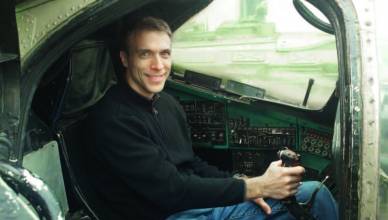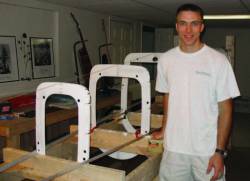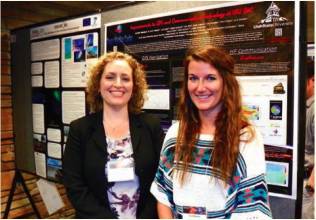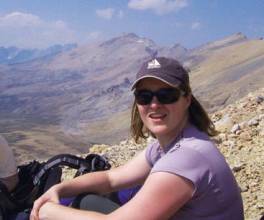 Bayes Rule
Bayes RuleEngineering specialties
Navigation research and development is truly an interdisciplinary enterprise. I have focused on
Engineering specialties
Navigation research and development is truly an interdisciplinary enterprise. I have focused on
- Estimation theory and stochastic modeling
- Signal processing
- Control theory / vehicle dynamics
- Computer vision
- Radar
- Software (both embedded and workstation-based applications / Matlab)
The Aha! What was the pivotal moment that led you to GNSS?
Testing our brand-new Ashtech Z-12 in the parking lot in 1995 and seeing decimeter-level precision for the first time. Obviously, this was a game-changing technology!
Event that most signifies to you that GNSS has “arrived.”
You’ve arrived when “GPS” is integrated into the English language meaning any device that navigates, or more generally, provides some kind of direction or guidance! Much like “Xerox” is synonymous with any-type of copier, GPS is now a ubiquitous term.
Engineering mentor – person, place, or thing
The Air Force Institute of Technology (AFIT)
I was fortunate to attend AFIT for both my MSEE and Ph.D. While at AFIT, I was a student in the guidance, navigation, and control academic track and had the opportunity to design an automatic, energy-optimized formation flight control system for the C-130 as well as a completely passive image-aided inertial navigation system. Learning from my advisors, Meir Pachter and John Raquet, as well as other faculty members such as Pete Maybeck, John D’Azzo, Dino Houpis, and Brad Liebst was a life-changing experience. They ultimately planted the seeds that allowed me to gain confidence as an engineer and realize I could make contributions to the field.
Favorite Equation:
Bayes Rule (see inset photo, above right)
What popular notions about GNSS most annoy you?
It has to be the misconception that GNSS receivers “broadcast” or “transmit.” Another is blaming “GPS” for errors in the map database of a device.






